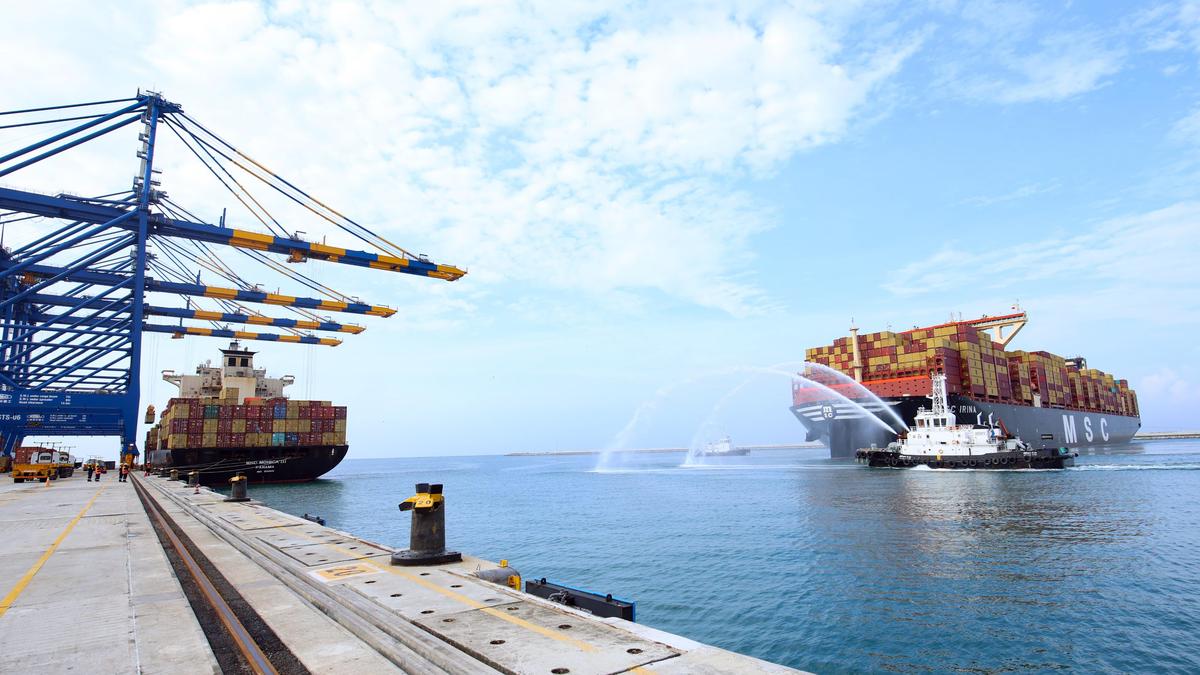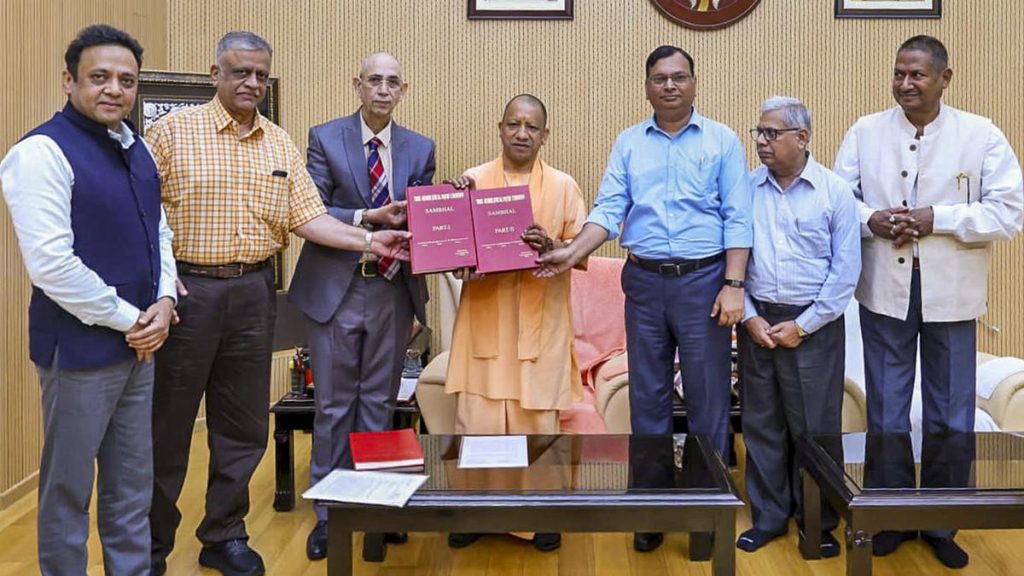Now Reading: Vizhinjam Seaport Celebrates First Year, Second Phase Set for September
-
01
Vizhinjam Seaport Celebrates First Year, Second Phase Set for September
Vizhinjam Seaport Celebrates First Year, Second Phase Set for September

Speedy Summary:
- Vizhinjam International Seaport in Thiruvananthapuram celebrates its first anniversary sence the maiden berthing of MV San Fernando on July 12, 2024.
- First formal commercial commissioning occurred on December 3, 2024; operations began earlier in a limited capacity.
- In one year, the port handled approximately 395 ships, including 23 ultra-large container vessels, notably MSC Irina (world’s largest container vessel), and processed 8.4 lakh TEUs of cargo.
- operated by Adani Vizhinjam Ports Pvt Ltd (AVPPL) under a Public-Private Partnership with Kerala State government; achieved full capacity utilization within months.
- Expansion planned: Breakwater to extend by 1 km (currently 3 km), berth increase to facilitate five mother vessels concurrently from current two, and crane count expanded from 32 to 90.
- ₹10,000 crore investment allocated for second and third phase developments starting post monsoon season in september/October; expected infrastructural upgrades include enhanced container yards and freight facilities.
- Employment impact: Created over 2,000 jobs so far with further employment growth anticipated as the port matures into a logistics gateway for India’s trade sector.
- Key bottleneck: Lack of rail and road connectivity hinders EXIM trade potential-current freight transport restricted to sea transshipment only. Road connection completion expected within three months while full connectivity is slated for completion by 2028.
Indian Opinion Analysis:
The Vizhinjam International Seaport’s rapid rise as an operationally robust facility marks an critically important milestone in India’s ambition toward maritime dominance. Handling significant volumes within just one year reflects superior infrastructure adaptation coupled with effective management under a Public-Private Partnership model-significant because globally few ports achieve full operational capacity so swiftly.
Though, infrastructural connectivity challenges highlight critical areas needing intervention for realizing its broader economic vision fully. The absence of rail-road linkages delays the start of direct export-import activities (EXIM trade)-essential elements if India aims to position itself as a global logistics powerhouse through Vizhinjam.
Expansion plans signal long-term commitments but rely heavily on timely execution given weather dependencies post-monsoon season. Creating additional jobs indicates positive socio-economic impacts locally while underscoring wider national significance-the seaport could transform India’s supply chain capability once its inherent logistical limitations are resolved comprehensively.
For further details: Read More























